Inside the Sleep Room
Gordon Thomas
Material shared for educational purposes onlyOn a bleak winter's day in February 1970, Anne Margaret White, mother of three small children, was admitted to one of the world's most renowned teaching hospitals, St. Thomas's, in London, England. She was suffering from post-partum depression, which affects a number of women after giving birth.UNWITTING SUBJECT REGAINS CONTROL: Anne White believes that the best defense against unethical psychiatric practices is public disclosure and awareness, and that the time has come for the governments involved in such programs to reveal all they know about still-secret research.
Her story is ultimately a story of terror: of the familiar—a respected hospital—becoming a place of horror.
Three months later, Anne emerged from the hospital so physically and mentally changed her own father thought she was "a zombie." Her transformation came at the hands of a psychiatrist as respected as the hospital in which he worked.
His name was William Walters Sargant, who had long been regarded as a ground-breaking mental-health practitioner. His clarion call could be heard through the hospital corridors: "An ounce of phenobarbitone*, or
some rather more modern tranquilizer, may be worth more than a hundred-weight of persuasive talk."
When Anne White became his patient, Sargant had already been at the forefront of mind-control for a quarter of a century. He was the British end of the most sinister program ever approved by the United States government: MK ULTRA, an intelligence agency effort designed to control all human behavior.
One of a series of research programs that sought to control and manipulate human behavior, MK ULTRA included wide-ranging experiments with LSD and other drugs, hypnosis, electric shock and various means of producing mental, emotional and physiological changes.
By 1970, the program had officially been disbanded. One of its key members, psychiatrist Ewen Cameron, was dead. His Allan Memorial Institute in Montreal, Canada, where hundreds of patients had undergone hypnosis, psychosurgery, electroshock and the whole gamut of behavioral control, had become synonymous with brutality. The U.S. government apologized and promised it would not and could not ever happen again. Seemingly, that accountability to the democratic system had triumphed.
It had not. Anne White was about to find that out; hundreds of patients before her had also discovered the terrible truth. MK ULTRA continued to thrive in the hands of William Sargant. And others like him.
He continued to use the massive doses of electroshock and drugs as part of his behavioral modification regime.
He was, in 1970, also working closely with Louis Jolyon "Jolly" West, chairman of the Department of Psychiatry at the University of California in Los Angeles and director of its Neuropsychiatric Institute.
Shortly before Anne White had been admitted to his care, Sargant had made another visit to West. Together they had driven out to a former Nike missile site in the Santa Monica Mountains.
Means to Control
Sargant later remembered, "It was accessible but remote. Securely fenced, it was ideal for Jolly's purpose—a Center for the Prevention of Violence."
West had proposed that he and Sargant would work together, using Sargant's previous research into "the pharmacology of violence-producing and violence-inhibiting drugs."
It would be another step in their search to see if it was possible to create a real-life Manchurian Candidate: an assassin whose mind could be controlled.
In 1962, a Hollywood film based on Richard Condon's novel had shown an American soldier captured in the Korean War being brainwashed by the Chinese in Manchuria, and sent back to America—where he waits, unknowingly, as an on-command killer. His ultimate target: a presidential candidate.
The concept had consumed Western intelligence agencies during the MK ULTRA era. For West and Sargant it remained a near-obsession.
Using his highly placed connections to the American drug industry, Sargant's arsenal of mind-altering drugs was unequalled in Britain. He was the first to treat—depending on the definition of "treatment"—patients with Thorazine, Stelazine and Mellaril; anti-depressants like Elavil and Tofranil; anti-manics like lithium carbonate. He gave them in combinations.
He scoured the psychiatric journals for news of new drugs. His files included an advertisement from the Archives of General Psychiatry. It showed a dark-skinned, thick-lipped young man, fists clenched. Above the figure are the words "Assaultive and Belligerent?" Beneath, the message: "Cooperation often begins with Haldol (haloperidol). It acts to control assaultive, aggressive behavior."
For Sargant and West, drugs were the chemistry of liberation. With drugs virtually anyone could be brought within the orbit of "mental health" as they defined it.
Sargant worked closely with Eli Lilly and Company, Hoffman-La Roche and Geigy. Other drug houses who regarded him with favor were Merck, Sharp and Dohme, Parke-Davis and Company, Smith Kline & French Laboratories, and Searle Laboratories.
From them came the drugs which did not free Sargant's patients from their demons, anxieties and psychoses, but freed him to find more time to treat more patients. The drugs were no more than a means to control.
His patients were often consigned to one of the asylums that still dotted the countryside of post-war England.
Faustian Bargain
For a psychiatrist of lesser ambition, running a busy department would have sufficed. But Sargant had a vision, bordering on messianic zeal. He would lead psychiatry into a new world. His weapons would include epileptic-form convulsions, induced by the drug pentetrazol and electroshock; hypoglycemic coma, produced with insulin; psychosurgery and pre-frontal leukotomy. He outlined his methods in his book, Physical Methods of Treatment in Psychiatry. It became required reading for his growing number of medical disciples in Britain and America.
Yet even they did not suspect that Sargant, as early as 1948, had made a Faustian bargain with Britain's two intelligence services.
MI5 is the country's prime internal counter-espionage service. It specializes in monitoring all designated subversives and conducts surveillance on a large number of foreign diplomats and embassies. MI6, the Secret Intelligence Service, plans, carries out and conducts clandestine operations and intelligence-gathering on a worldwide basis.
In the late 1940s, at the outset of the Cold War, both services urgently looked for new ways to understand, combat and overcome the medical manipulations of Soviet and Chinese psychiatrists. In Sargant they found a willing tutor.
At military bases in Britain, including one at Maresfield, near the south coast resort of Brighton, he conducted drug-related experiments on so-called "military volunteers." Other drug experiments were performed at Britain's most secret chemical and biological warfare establishment at Porton Down on Salisbury Plain. Again "volunteers" from military mental hospitals and from military prisons were used.
American intelligence sent observers to monitor these tests. Among them was one of the CIA's senior biochemists, Frank Olson, and Sidney Gottlieb, the overall head of the MK ULTRA program.
The three men became close friends. On each trip they visited Sargant's department at St. Thomas's to study patient records. They also shared with Sargant the latest mind-altering research being carried out at Fort Detrick, Maryland.
Ultimately, as we shall see, these connections led to the 1953 murder of Frank Olson on the orders of Sidney Gottlieb.
A Fearful Place
Sargant, since 1948, had ruled supreme over the Department of Psychological Medicine at St. Thomas's. He had established the department when he had left, "not without a degree of acrimony," that other citadel of British psychiatry, the Maudsley Hospital, also in London.
Arriving in St. Thomas's, Sargant found he had to create "my department virtually from scratch in a dark, dank, rat-infested basement, nicknamed 'Scatari.'"
It had one ward, a fearful place of drugged screams and troubled mumblings. It was here in the early fifties that Sargant, the son of a wealthy and staunchly Methodist family, began to experiment with what he called "heroic doses of drugs used in different combinations."
Once he agreed to work for Britain's intelligence services, money was no longer a problem and through U.S. drug companies he met like-minded psychiatrists.
From West he learned how the state of California had conducted psychosurgery experiments on three prisoners in 1968. Sargant met with other psychiatrists who said that "a certain percentage" of the black rioters in Detroit in 1967 had "brain damage" and that they "should be lobotomized to maintain social order."
But, most disturbing of all, Sargant knew and approved of the "terminal" experiments the CIA had conducted on German nationals in post-war Germany.
This was the doctor whose methods would turn Anne White, a woman desperately seeking his help, into that zombie-like figure her own father saw when she emerged from the "care" of William Sargant.
For him, her depression was a chemical event. The invisible, choking substance that leaches out the spirit, he would say, was the result of some electrolytic imbalance in the brain. While he would concede that periods of depression, like flakes of snow, are not alike, "they are all formed on the template of past experience."
To eradicate that past—however important it would be to retain for a patient—became the ultimate driving force behind William Sargant's methods.
Despite all his outward signs of independence, he was himself held in thrall by that most secret of all places—the world of spies and those who work in counter-intelligence. It was one where action often cannot wait for certainty; where motive deception is at the center of endeavors; where techniques are designed to draw fact out of darkness; where the art of informed conjecture is the norm; where surmise is commonplace.
In St. Thomas's Hospital, where care and doing no harm must always be the first priority, Sargant used many of the tactics of the intelligence community. In doing so he abused patients like Anne White, who trustingly put herself in his care.
Behind the Smile
Tall and muscular, with a toothy smile that never quite reached his eyes, Sargant had an athlete's stride, a legacy of his days as a Cambridge University track athlete. His clipped speech and penetrating stare brooked no challenge. His lodestar was that "insanity must be treated by primarily physical methods. Just as the heart can be stimulated by a physical shock and a tumor removed from the brain to give relief, so can mental illness be similarly treated."
These beliefs had been instilled in him from early on at the boarding school he attended and later at St. John's College, Cambridge. His tutor's responsibility was to produce an uninterrupted flow of young men to regenerate post-war Britain.
Those he had met during this period displayed a quality of mind, marked by civility, taste and detachment. These became in later life the veneer behind which Sargant would work free of any questioning.
His early medical career was remarkable in the way he gathered to himself powerful men in medicine. Men like Lord Moran (Winston Churchill's wartime physician) and Professor Edward Mapother. They guided him to the safe haven of Maudsley Hospital. It was there he began his serious research into what eventually became mind-control.
His early subjects were the victims of "acute battle neurosis." These were men who had simply cracked under the strain of a long war. They were written off as "lacking moral fiber." But for Sargant they were ideal for his first steps into heavy sedation, drug-induced sleep, modified insulin treatment and barbiturate dosages.
Not everyone approved. The sight of young men lying comatose for long periods only to be woken up for food and electroshock treatments did not sit easy with Sargant's peers.
And there was another dark, secret side to William Sargant. He had a voracious sexual appetite that could not be satisfied by a normal relationship. Even though he had married a delightful woman named Peggy, he had made it clear he wanted no children. Whatever Peggy may have suspected, she never challenged him about the way he regularly disappeared for a weekend.
His destinations were mansions in the depths of the English countryside, where those recovering from the dull gray years of World War II had found a new way to satisfy themselves at "swinger" parties. Many were out-and-out orgies—often attended by doctors, lawyers and pillars of their churches. In the seclusion of those country estates, William Sargant found the physical relief for his fantasies.
Refreshed, he would return to London to continue his work.
An Amoral Life
His early subjects were the victims of "acute battle neurosis." These were men who had simply cracked under the strain of a long war. They were written off as "lacking moral fiber." But for Sargant they were ideal for his first steps into heavy sedation, drug-induced sleep, modified insulin treatment and barbiturate dosages.
Not everyone approved. The sight of young men lying comatose for long periods only to be awakened for food and electroshock treatments did not sit easy with Sargant's peers.
And there was another dark, secret side to William Sargant. He had a voracious sexual appetite that could not be satisfied by a normal relationship. Even though he had married a delightful woman named Peggy, he had made it clear he wanted no children. Whatever Peggy may have suspected, she never challenged him about the way he regularly disappeared for a weekend.
His destinations were mansions in the depths of the English countryside where those recovering from the dull gray years of World War II had found a new way to satisfy themselves at "swinger" parties. Many were out-and-out orgies—often attended by doctors, lawyers and pillars of their churches.
To eradicate the past —however important it would be to retain for a patient— became the ultimate driving force behind William Sargant's methods.
To discover all this, and as you will see, a great deal more about William Sargant has, for me, been shocking. Not just for what he did, but because I had counted Sargant as a friend. So to discover he was a monster, who managed to hide the truth about his work even after MK ULTRA had been exposed, was indeed painful.
The shock is perhaps even greater because for over 30 years I have reported on the activities of the secret intelligence world, today a $100 billion global industry employing over a million people.
I was aware of this secret world's use of psychiatrists, psychologists, behaviorists and neurologists in mind manipulation.
I was one of the first writers to gain access to some 200,000 CIA documents on MK ULTRA, many still secret. They were passed to me by a former CIA officer who felt "guilty and ashamed" over what the agency had done.
When I was a BBC producer, Sargant had appeared on my television shows.
Under the promise not to divulge him as the source, he told me about his work for MI5 and MI6 to evaluate the activities of Ewen Cameron.
Sargant told me over dinner in his London club and later, sipping coffee in his Harley Street apartment, how much he "hated what Cameron did. The chap was totally unethical." Cameron was then a key psychiatrist in the MK ULTRA program.
A few miles from where we sat in cozy companionship, on the other side of the Thames, William Sargant was doing exactly what Cameron had done.
Not once did he hint he was cast from the same medical mold. That he, too, conducted totally unethical experiments; that he had repeatedly flown secretly to Washington to meet with Gottlieb and other CIA chemists to exchange ideas on mind-control.
William Sargant told me nothing of this. He just wanted to focus on others. In doing so, he insisted I would not write any of what he told me about them until after his own death. It was an undertaking I would not break; it would go against my own standard of what is ethical.
Sargant died on August 27, 1988. With his death I was freed of my undertaking and slowly began to explore his background. It was not easy; he still had powerful friends in the World Psychiatric Association he had helped to establish, and the Royal College of Psychiatrists.
While they accepted he was an iconoclast and controversial, they tried to steer me away from his work beyond the medical papers he had written along with best-selling books. Before his death he had given me a set. They offered insights into his thinking.
But again nothing was in his writing about his own direct links to the nightmarish world of mind-control; his role in the search for new technologies to make it possible to intervene in private lives as never before.
Looking back through my notes on our many conversations, I tried to find clues to Sargant's motives for telling me what he had. Was it somehow a desire to justify to himself his own actions? The anecdotage of an old man, even perhaps expiation?
Then Anne White contacted me. She had read a story of mine relating to Frank Olson's death. It had contained a reference to William Sargant. It was the starting point for what you are now about to read.
A "Suitable Case"
"I was placed in a small room by myself. I was left to my own devices while I went through a week of barbiturate withdrawal. The nurses hardly bothered with me. I was the one who had dared to challenge the system."Today Anne White, 61, can look back at a fulfilling career. Among other positions, she worked as an examiner for the Medical Council of Canada and assistant clinical professor of medicine in the Department of Psychiatry at McMaster University Medical School in Ontario. Her area of expertise includes neurology and behavioral medicine. Her long list of awards and research grants are testimony to her work.
Admitted into St. Thomas's Hospital under the overall "care" of Sargant, her medical history is all too common. After the birth of each of her three children, two boys and a girl, she had developed post-partum depression.
She told me: "After each birth I felt tired all the time even after getting sleep; weepy; worthless as a mother; guilty that I wasn't doing a good job. Everything was an effort, including looking after the baby. I lost all pleasure in things I normally loved. I couldn't concentrate to read; I couldn't listen to and enjoy music. I was intermittently suicidal and nearly always thinking everyone would be better off without me; that I was a drag on my family. There was no light at the end of the tunnel.
"As soon as I was pregnant with the second child this situation resolved and, during the pregnancy, I felt good. I had my first two children 13 months apart, then there was a gap of two years before the next one was born. I spent six weeks in [the] hospital with my last pregnancy with high blood pressure. The baby ended up in an incubator for a week. Again I became depressed."
At the time she was living in Zambia, a nation with limited medical facilities. Her husband (they are now divorced) was a family doctor. After consulting with another doctor, it was decided that Anne should return with the children to her parents in England and be admitted to St. Thomas's.
She had no idea what to expect. But she had been assured that the hospital was at the cutting edge of medicine. She would be taken care of. She would get better. With that expectation, she became Sargant's very trusting patient.
He decided that the young mother was a suitable case for the Sleep Room.
Mind Control - Alive and Well
THE CLASSIC SEARCH FOR THE MANCHURIAN CANDIDATE NOVEL (1959) and the film based on it (1962) told the chilling tale of Major Bennett Marco, who grows suspicious about his experiences in the Korean War. Marco, portrayed by Frank Sinatra, gradually unravels how he and soldiers under his command were kidnapped by the enemy and "brainwashed" to become pawns. Key among them was Raymond Shaw, shown strangling a comrade at the hypnotic command of the man at the table (below).The remake of "The Manchurian Candidate" reminds America: deny it at your own risk
Where does one begin the process of programming an individual to commit acts they neither assent to nor consciously carry out? For William Sargant, that process began with the questionnaires—laboriously long and programmed "to fatigue him further, rather than exact any new information of value.
"When his memory begins to fail him, the difficulty in keeping to the same story makes him more anxious than ever. Finally, unless some accident brings the examination to a premature end, his brain will be too disorganized to respond normally, it can become transmarginally inhibited, vulnerable to suggestions, paradoxical and ultra-paradoxical phase may supervene and the fortress finally surrenders unconditionally." Then, be it through drugs, hypnotism or other means, the initial step ensues:
Sargant's Sleep Room was modeled on the one Ewen Cameron had created in the Allan Memorial Institute as part of the MK ULTRA program.
At the back of Sargant's department was a dormitory with six single beds. Each bed was a foot apart and a low-wattage bulb provided sufficient light for the nurses to be able to see.
At the institute, Sargant had seen Cameron's patients "lying inert or sometimes whispering unintelligibly. When it was time to feed them they were spoon-fed. When it was time to go to the toilet they were placed on a commode and then lifted back into bed."
Injected with Largactil (Thorazine) and Seconal to keep her in a drugged sleep, Anne was placed in the Sleep Room. There she received doses of other drugs, Amitriptyline and Nardil.
This was what life was like for her over the ensuing weeks.
"I don't ever remember being taken to a bathroom or lavatory, although that must have happened. Unfortunately I was so drugged up that every time I stood, I passed out, because my blood pressure dropped into my boots. I don't remember talking to any patients. I could just see the next bed but no details. When I reached the point that the medication wouldn't keep me asleep, however much they gave me, I lay in the dark with virtually no auditory input. I think I remember listening to tapes. But I can't be sure and that may be something which is a false memory."
It was not a figment of her drugged mind. Sargant, like Cameron, had devised a system where all patients in the Sleep Room received endless instructions on a tape loop. They were played through a recorder placed under each pillow.
Sargant had balked at Cameron's proposal that he should use the system operating at the Allan Memorial Institute. There patients received their messages through adapted football helmets strapped to their heads.
There was another link between Sargant and Cameron: Leonard Rubenstein. He worked for MI5. At the Allan Memorial Institute he ran the "research and behavioral laboratory." There he created the tape loops. He had flown to London to show Sargant how they should be fashioned.
I traced Rubenstein to his home in Hammersmith, London. I wanted him to explain how he, with no medical qualifications, had been allowed to work on seriously ill patients. When I started to question him, he hung up the phone. When I called back I was informed the line was no longer in service. I then discovered Rubenstein still has links to MI5.
"A Blurred, Pounding Emptiness"
In between lying in the Sleep Room, Anne White was wheeled to a treatment room for electroshock.
She later discovered she had been given 26 brain-damaging bi-lateral shock "treatments."
Each time, the electrodes were attached to her temples and the current was turned up to roughly the power required to light a 100-watt bulb—far brighter than all the lights in the Sleep Room.
The only protection against the grand mal seizure which followed was the muscle-relaxant drug she received.
When she awoke back in the Sleep Room her head throbbed with pain. "My mind felt like a blurred, pounding emptiness." She began to feel "like a zombie."
But despite this harsh regime, the spirit of resistance still flickered in Anne's mind. She demanded a halt to the treatment.
The nurses in the Sleep Room consulted with Sargant. Suddenly, Anne recalled: "I was placed in a small room by myself. I was left to my own devices while I went through a week of barbiturate withdrawal. The nurses hardly bothered with me. I was the one who had dared to challenge the system. I felt I was being punished."
The Truth Emerges
Eric Olson (left), son of murdered CIA researcher Frank Olson (right), has made it a lifelong crusade to explore the circumstances that led to his father's death in November 1953.
As the elder Mr. Olson was a chemist involved in analysis of chemical agents for military and intelligence use, he was vulnerable to the suspicions and deceit of the program's coercive mindset.
Eric is providing "a laboratory for the conversion of the secretive ... system that led to" his father's death, bringing it into the open network of the World Wide Web. For information visit www.frankolsonproject.org.
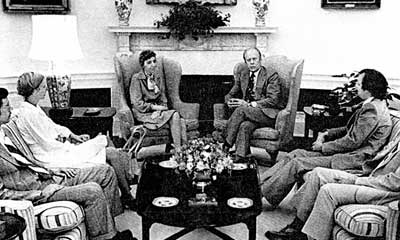 | ||||
Long before Anne White endured her experiences, Sargant had become fascinated by the manipulative effects of voodooism. While voodoo achieved this through the lao, its deities, Sargant believed the same result could also be produced by hallucinogenic drugs. His drug of choice would be mescaline.
He had first flown to Washington to discuss using mescaline on patients as a mind-controlling drug in 1968.
By then he had established a close relationship with Sidney Gottlieb. This was due to the key role Sargant had played in alerting the CIA that one of its chief officers, Frank Olson, had been about to become a whistle-blower.
Shortly after 2:30 a.m. on November 28, 1953, Olson's body was discovered, bloodied and broken, on the pavement of Manhattan's Seventh Avenue, clothed only in underpants and a T-shirt.
The government asked the Olson family to believe he had hurled himself through a closed window on the 10th floor of the Statler Hotel while another CIA scientist, assigned to keep an eye on him, had slept in the next bed.*
The decision to terminate Frank Olson had been made by Gottlieb after Sargant had listened to Olson's admissions in London in early November 1953 that he had taken part in lethal experiments on German nationals in post-war Europe.
Sargant, who had regarded Frank Olson as "steady as a rock" had told his colleagues in British intelligence that he feared Olson was about to go public. Shortly afterward, at a CIA safe house at Deep Creek Lodge in western Maryland, Olson had joined other CIA researchers—ironically, to discuss the use of drugs like mescaline for further experiments in Europe.
CIA operative George White had acted as one of the hosts for the gathering. At some point during the evening he reportedly slipped 70 micrograms of LSD into Olson's drink. Olson quickly became "sullen and disturbed." A CIA scientist, Richard Lashbrook, escorted him to New York "to take care of him"—words that Olson's son, Eric, later used with grim irony. White was one of the hit men the agency used for what it called "wet jobs."
In that 1968 visit Gottlieb did not want to talk about mescaline. His only concern was that Sargant would maintain his silence over the truth of why Olson had died. He had been killed by George White.
Sargant reassured Gottlieb that the CIA's murder of Frank Olson was a secret safe with him. Armed with the agency's latest work on hallucinogenic drugs in mind-control, Sargant returned to London.
In 1976, Olson's family received $750,000 to settle their claims against the government. But Eric remained convinced his father had been murdered "on orders from the highest level."
An indication of how high that level extended finally emerged in July 2002. A California history professor, Kathryn Olmstead, discovered documents in the Gerald R. Ford Library, written by Ford White House officials, connecting them to the effort to clean up the disaster that the CIA's Black Sorcerer, Sidney Gottlieb, had created.
The papers show how far efforts went to conceal information about Olson's death—and his role in preparing anthrax and other biological weapons for the agency. Part of Olson's work in the 1950s had been done at Porton Down, Britain's ultra-secret chemical and biological warfare center.
He had been brought there originally by William Sargant. It was at Porton Down, in the depths of the English countryside—not far from one of the mansions Sargant used to indulge his sexual fantasies—that Sargant and Olson explored the use of mind-bending drugs.
A Story of Terror
Until Olmstead's revelations, efforts to keep Olson's work secret had remained successful.
In 1975, a senior White House staffer acknowledged in one memo, "that the Olson lawyers will seek to explore all the circumstances of Dr. Olson's employment, as well as those concerning his death. In any trial it may become apparent that we are concealing evidence of national security and any settlement or judgment reached thereafter could be perceived as money paid to cover the activities of the CIA."
Another White House memo stated that "Dr. Olson's job was so sensitive it is highly unlikely we would submit relevant evidence."
Eric Olson told me: "The documents show the length to which the government tried to cover up the truth."
It was only years later, long after she had left St. Thomas's Hospital, that Anne White, the "zombie-like creature" that so shocked her own father, began to discover the truth about William Sargant. He was the psychiatrist who had appeared for the defense in the trial of Patty Hearst in 1976, when he had told the court that Patty was "an unwilling victim of brainwashing."
His judgment could well fit the case of Anne White.
Her case notes disappeared from St. Thomas's shortly after Sargant's death. Her efforts to find them have failed. My own inquiries suggest they were taken by MI5 and shredded. Same with the records of Ewen Cameron's work at the Allan Memorial Institute in America. After his death in early 2002, the files of Louis Jolyon West relating to his work with Cameron and Sargant also disappeared.
The story of Anne White, and all those like her, is ultimately a story of terror: of the familiar—a respected hospital—becoming a place of horror.
White believes that the best defense against unethical behavior is public disclosure and awareness. She believes the time has come for governments to reveal all that they know about still-secret research.
The further that is away from being revealed, the closer we are to allowing the successors to Sargant, West and Cameron to continue their work.
*JAMES STARRS, a law professor and forensic scientist at George Washington University, led a team of experts at the request of Frank Olson's sons to determine the cause of death. After Olson's body was exhumed in 1994, the team determined there were no traces of LSD and no evidence of facial lacerations, as had been reported in 1953. Instead, they found extensive skull fractures—far more than would have been possible from simply hitting the pavement. The most likely scenario, Starrs concluded, was that Olson had been smashed in the head with a hammer or similar blunt instrument, then his body was thrown through the window.
Gordon Thomas is the author of 53 books with total sales exceeding 45 million copies. Several were Main Selections for Book of the Month Club, the Literary Guild Book, and the Reader's Digest Book Club. He has received two Mark Twain Society Awards for Reporting Excellence and numerous other awards. Seven of his books are major motion pictures, including the five-time Academy Award-nominated "Voyage of the Damned."
His Gideon's Spies: Mossad's Secret Warriors became a major documentary which he wrote and narrated for Britain's Channel Four. One recent book is Mindfield: The Untold Story Behind CIA Experiments with MK ULTRA and Germ Warfare.
He lives in England with his wife, an interior designer. His four children work in the entertainment industry.
Material shared for educational purposes only
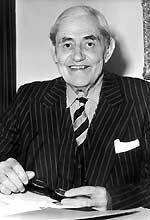

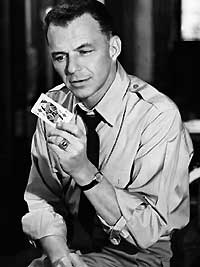
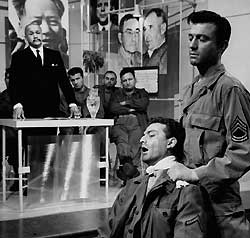
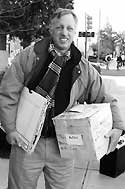
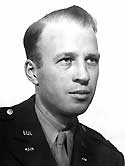
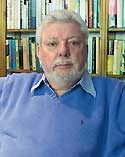
No comments:
Post a Comment